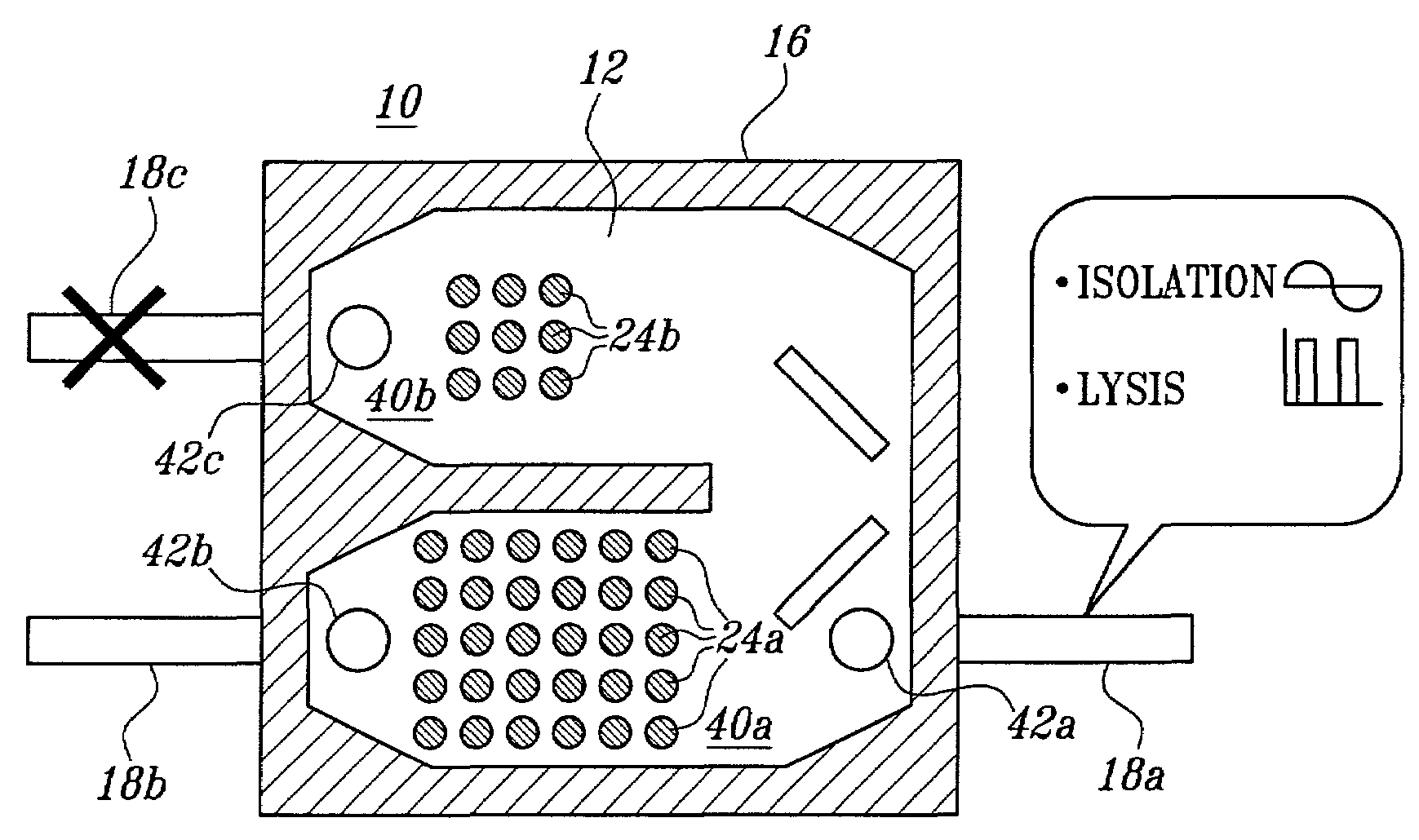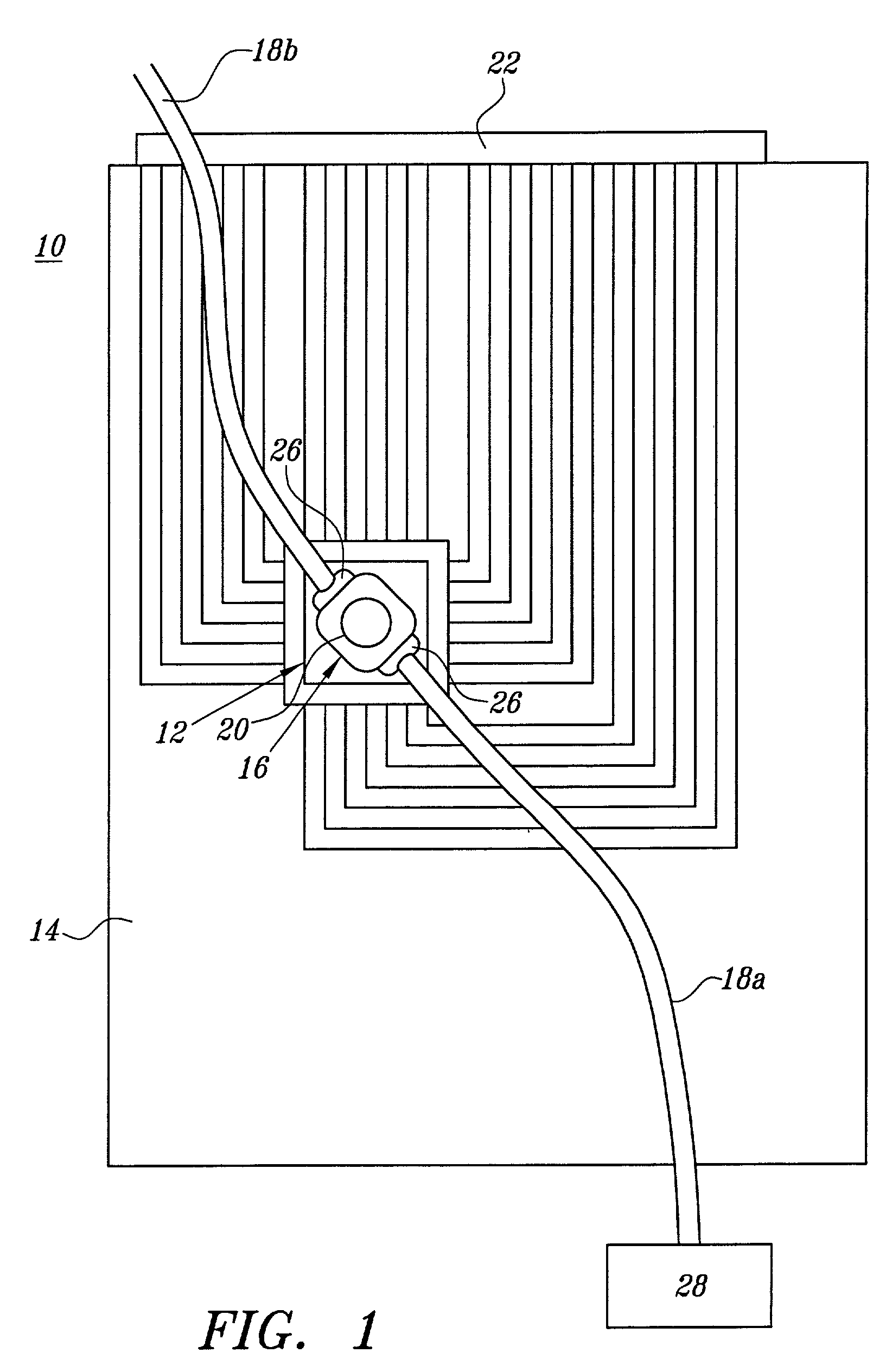Channel-less separation of bioparticles on a bioelectronic chip by dielectrophoresis
a bioelectronic chip and bioparticle technology, applied in the field of dielectrophoresis-free bioelectronic chip channelless separation of bioparticles on the chip, can solve the problems of thermal convection disturbance, push off, and multiple devices in a row, and achieve the effect of reducing the number of devices
- Summary
- Abstract
- Description
- Claims
- Application Information
AI Technical Summary
Benefits of technology
Problems solved by technology
Method used
Image
Examples
Embodiment Construction
[0049]The present invention comprises devices and methods performing channel-less separation of cell particles by dielectrophoresis, DC high voltage-pulsed electronic lysis of separated cells, separation of desired components from crude mixtures such as cell lysates, and / or enzymatic reaction of such lysates, all of which can be conducted on a single bioelectronic chip.
[0050]A preferred embodiment of the present invention comprises a cartridge 10, shown in FIG. 1, including a microfabricated silicon chip 12 on a printed circuit board 14, a flow cell 16 mounted to the chip 12 to form a flow chamber including fluid tubing 18a and 18b and a detection window 20. The flow chamber preferably has a volume of about 10 μl. The cartridge 10 also includes output pins 22 for electronically connecting the cartridge 10 to an electronic controller (e.g. instrument or computer) (not shown).
[0051]The microfabricated chip 12 is shown in FIG. 2 (a detail is shown in FIG. 4A), and, as shown, includes a...
PUM
| Property | Measurement | Unit |
|---|---|---|
| Fraction | aaaaa | aaaaa |
| Volume | aaaaa | aaaaa |
| Polarity | aaaaa | aaaaa |
Abstract
Description
Claims
Application Information
 Login to View More
Login to View More - R&D
- Intellectual Property
- Life Sciences
- Materials
- Tech Scout
- Unparalleled Data Quality
- Higher Quality Content
- 60% Fewer Hallucinations
Browse by: Latest US Patents, China's latest patents, Technical Efficacy Thesaurus, Application Domain, Technology Topic, Popular Technical Reports.
© 2025 PatSnap. All rights reserved.Legal|Privacy policy|Modern Slavery Act Transparency Statement|Sitemap|About US| Contact US: help@patsnap.com



